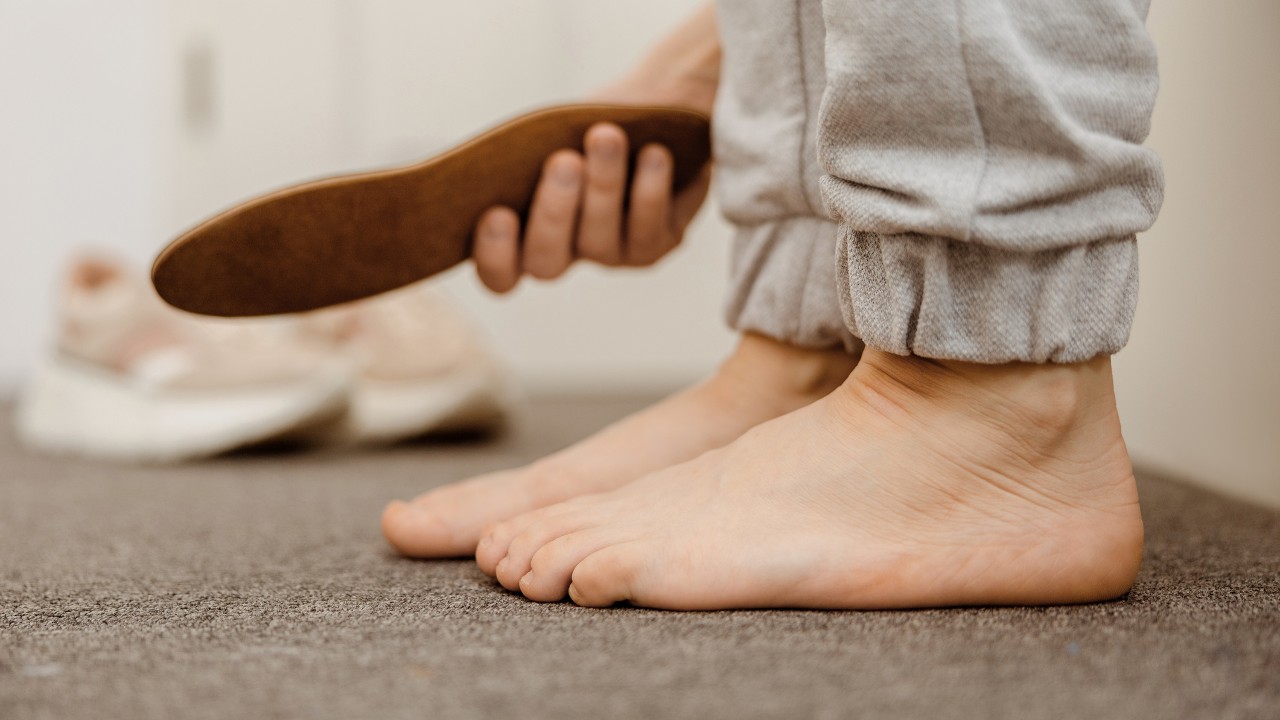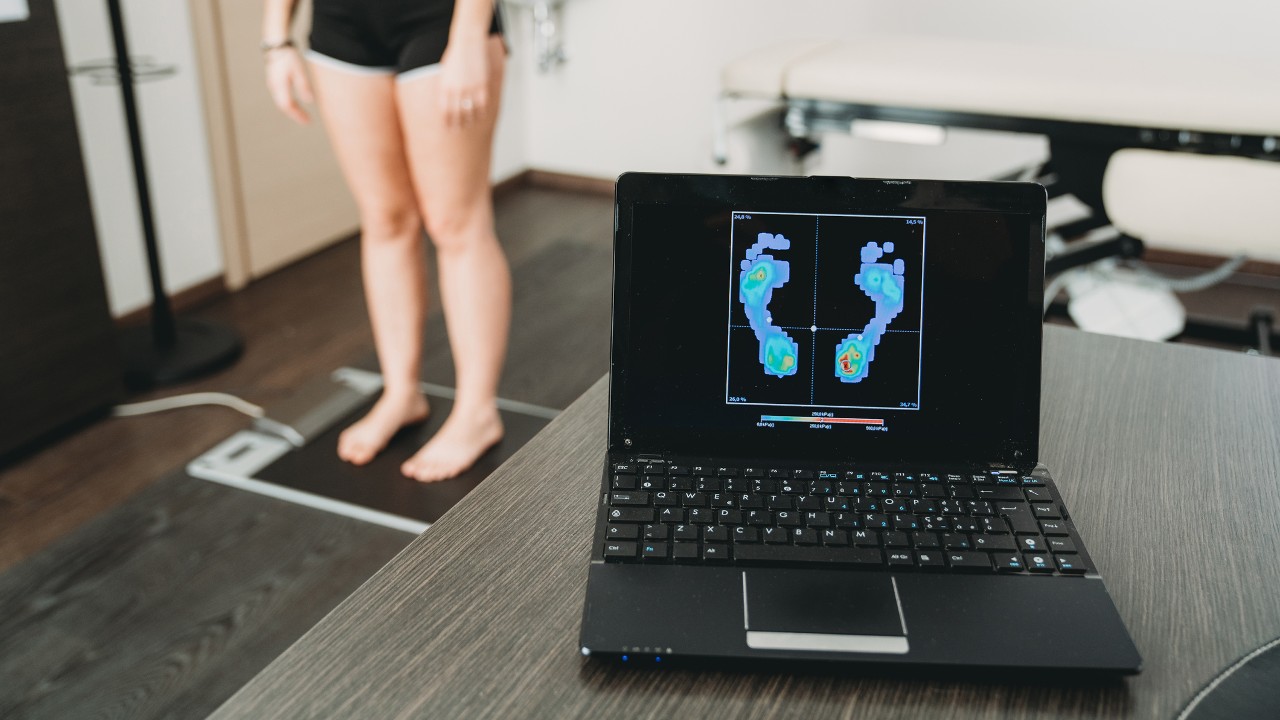Do You Need Special Running Shoes For Flat Feet?
If you have a low arch then read this expert advice from a podiatrist before rushing to the shoe store

If you have flat feet and are worried about it, then we have two bits of good news for you. One is that you might not actually have flat feet – it’s something people aren’t always reliable at judging themselves. The second is that even if you do have flat feet, it’s probably nothing to worry about.
Runners who suffer problems related to flat feet are often advised to get running shoes with extra stability elements to counter overpronation. However, that’s not at all set in stone. We spoke to Alex Townsend, a specialist musculoskeletal (MSK) and sports podiatrist at Pure Sports Medicine, about flat feet and whether they require special running shoes.
What are flat feet?
A flat foot is just a foot with a lower arch profile. There is less space between the inside arch and the ground. There’s a lot of hype around arch height among patients and runners and it’s often blamed, in my opinion incorrectly, for being the leading cause of everything.
How do you find out if you have flat feet?
The first thing to do is observe it. Simply look down – you can see if you have a flatter foot posture. However, a lot of people are not particularly good at self-judging. There is also a test advised by running magazines and shoe manufacturers, which is called the wet paper test or wet paper towel test. Put a wet foot down on a piece of paper and you’d be able to see if you have a higher profile because there’ll be less contact; if you have a lower arch profile you have more contact and so more of the paper will be wet. It is not a good, reliable test – it doesn’t really hold any clinical value – but it’s something that shoe manufacturers often recommend to select your perfect shoe.

How does having flat feet affect running?
Flat feet are blamed for many of the main injuries that runners get – including plantar fasciitis, Achilles tendinopathy, tibialis posterior tendinopathy – or stress fractures. That’s quite a profound claim to make, in my opinion. I see just as many of these running issues with a higher-arch foot, often more of these issues with a higher arch. So arch profile, in my humble opinion, doesn’t seem to have much to do with it.
The proposed theory by a lot of non-clinicians is that the arch acts as a spring, right? Yes and no. The arch is there as a sort of a shock absorbency aspect when we’re weight bearing and loading through the foot, but it’s not a spring. It is just not how it works. Realistically, flatter foot postures don’t affect running a significant amount, despite what people say.
Often when I have a patient who is terrified that they’ve got flat feet I say Google Eliud Kipchoge’s feet or Haile Gebrselassie’s feet, and you will see they have really flat foot postures because it’s often congenital. It can be hereditary with certain ethnicities, and if you look at the sub-Saharan African population, generally they’ll have a flatter posture than Caucasian populations or east Asians. And sub-Saharan Africa has all the top marathon runners!
How do brands design shoes for flat feet?
Over the years, they’ve tried to increase the stability of the inside border of the shoe. And they’ve done that in a number of ways. One is with varus tilting. What that means is that they would have the shoe lying on a platform where it’s slightly inverted, so it’s essentially pushing the foot outwards.
The other way that they achieve varus tilting is a guardrail – a bit of plastic coming through the mid-layer of the shoe or even the upper material of the shoe to act as a support bar around the arch of the foot. Some manufacturers build more of an arch profile into the shoe, and some increase the density of the foam in the midsole of the shoe.
A lot of brands seem to have reduced the level of stability in shoes released in the last one to two years, compared with 10 years ago, because since the invention of the stability shoe running injuries haven’t reduced. Simply controlling the movement of pronation has not really done a lot to the amount of running injuries that people are getting, because the biggest risk factor is simply being a runner.
Are most running shoes for flat feet designed to counter pronation?
Yes, generally speaking, a flatter foot posture is in a more pronated position. But being in a pronated position often doesn’t mean a great deal in the well-conditioned runner.
Do you need certain running shoes for flat feet?
Yes and no. I would never suggest to a patient to go for a stability shoe straight away because it’s not necessarily something you’re going to tolerate. I have a flatter foot posture. I don’t tolerate an orthotic when I do a fast run and I don’t tolerate a stability shoe because I don’t get on with that contact point in the arch. It’s just my preference.
The most suitable shoe is going to be the one that they find comfortable and that they can run in, but there are certain qualities I would direct certain patients to. A patient with, let’s say, a flat foot with midfoot arthritis, I might direct them to shoe with a rocker. The Hoka Clifton has a really nice rocker geometry in the mid-layer around the metatarsals. If someone has midfoot arthritis, a shoe like that can be enough to just stabilise those small joints and keep them moving.
I could suggest they go to a stability shoe if they have anterior knee pain – there is reason to believe that stabilising the middle part of the foot can help with that.
Overall can you just go with the shoe that feels comfortable?
We’ve got an evidence base to support it. BM Nigg posted a paper a number of years ago which made that argument, that the most appropriate shoe is the shoe that’s comfortable. Though in recent years where we’ve had more memory foams and more unstable shoes, I wouldn’t 100% agree with that any more.
Are carbon plate running shoes bad for flat feet, then?
Not necessarily. Like I said, there is the argument of Eliud Kipchoge – he’s got pretty flat feet and the Nike Alphafly is designed specifically for him. He gets on pretty well with it. Granted, he’s not doing all his slow training in something like that.
For your five-hour, six-hour marathon runner who has a little experience of running, maybe don’t go for the Alphafly. One, save your money, but two, you might find having a bit of stability more comfortable. But try it on. Try before you buy is the best bit of advice I can give.
If you are a fast runner and you’re looking for those few percentage point gains, and you are willing to pay and experiment – go for it. What I often say to my patients is we are all looking for this Cinderella experience of the perfect shoe fit. I don’t think we’re ever going to get the perfect shoe fit, because we are all individuals.
Alex Townsend is a specialist MSK and sports podiatrist with Pure Sports Medicine. Since graduating from the University of Southampton with a degree in podiatry in 2015, Townsend has worked across the NHS and private sector and he volunteers at the London Marathon each year to provide medical support. He is a member of the Royal College of Podiatry and the Royal College of Physicians and Surgeons of Glasgow.
Get the Coach Newsletter
Sign up for workout ideas, training advice, reviews of the latest gear and more.

Nick Harris-Fry is a journalist who has been covering health and fitness since 2015. Nick is an avid runner, covering 70-110km a week, which gives him ample opportunity to test a wide range of running shoes and running gear. He is also the chief tester for fitness trackers and running watches, treadmills and exercise bikes, and workout headphones.









